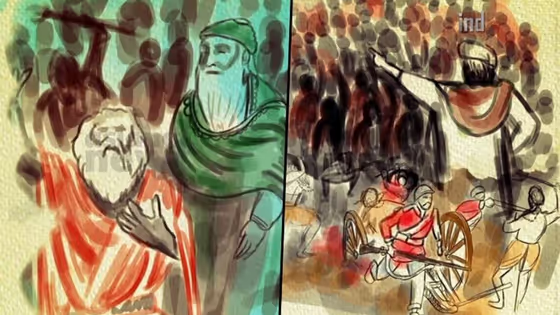
India@75: Story of the Sanyasi-Fakir revolt
There is an inspiring chapter in India's freedom struggle in which the Hindu monks and Muslim Fakirs took up arms and jointly fought the British.
There is an inspiring chapter in India's freedom struggle in which the Hindu monks and Muslim Fakirs took up arms and jointly fought the British. Known as the Sanyasi-Fakir revolt, it raged for three decades in the region comprising Bengal and Bihar during the 18th century.

The period was marked by the catastrophic Bengal famine in which 10 million were killed. Crop failure, extreme hunger and natural disaster had ruined life in the region. On top of these agonies came the East India Company's highly exploitative and forcible tax extortion.
Also watch: India@75: Rani Velu Nachiar, the first Indian queen to fight the British
Ramnami monks and Madari Fakirs were mendicants on pilgrimage who have traditionally sought alms from the region's people. But the famine and the Company's tax burden had impoverished the people so much that they could no longer help the mendicants.
Unable to bear the misery any longer, the local people began to resist the Company officials' attempts to extract money from them forcibly. The sanyasis and fakirs took up arms and took over the angry masses rising against the foreign invader. Bloody clashes spread across the region in states like Bengal and Bihar.
Also watch: India@75: Ghanashyam Das Birla, the industrialist who helped the freedom struggle
Branding the revolters bandits and miscreants, Company led by the first Governor General Warren Hastings unleashed widespread repression. Hindu and Muslim rebels led by the monks hit back, plundering Company treasuries and even killing English officials.
The fakirs also mobilised the Muslim weavers of Dhakka impoverished by colonial economic policies. However, Zamindars and rulers of various regions like Ranni Choudharani, the legendary queen adept in riverine warfare, backed the monks. Rebels aboard country boats in the swollen Teesta river launched flash strikes on Company forces.
Also watch: India@75: Bhagat Singh, the revolutionary who moved an entire nation
But even during these times of economic and human crisis, the Company coffers kept bulging with money forcibly collected from the land. It took almost three decades for the Company to end the Sanyasi Fakir revolt.